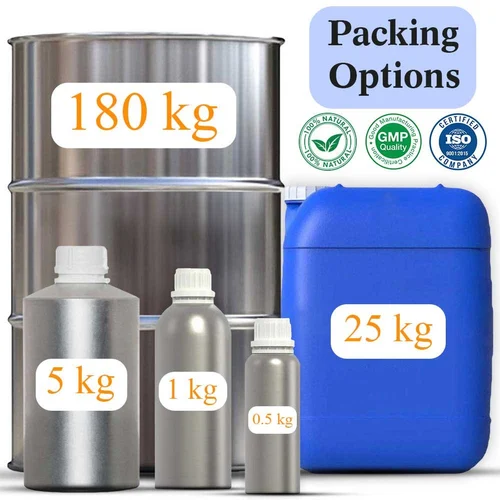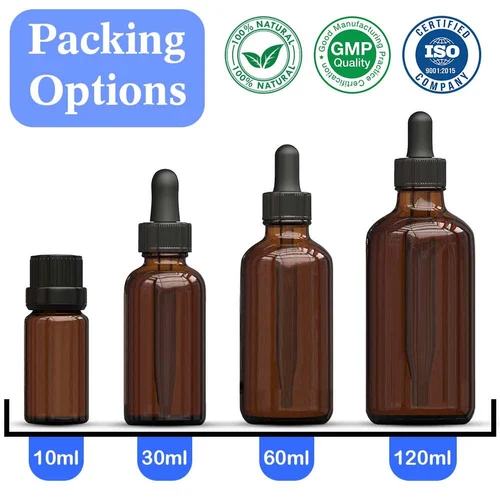Essentials, Organic Oil, Organic Products
Organic Rose Oil
₹15,000.0 / Kg
Product Details:
| Form | Liquid |
| Packaging Size | 180 Kg |
| Packaging Type | Drum |
| Plant Part Used/Extracted From | Flower Petals |
| Usage/Application | Pharma |
| Extraction Method | Steam Distillation |
| Brand | Sri Venkatesh Aromas |
| Country of Origin | Made in India |
- Description
- Additional information
- Reviews (0)
- Q & A
- Sustainability Remark
- More Offers
- Store Policies
- Inquiries
Description:
- A small, erect, prickly shrub with unequal, large, hooked prickles and many bristles, leaves compound, alternate, leaflets usually five, rachis not prickly, flowers usually pink, very fragrant.
Constituents & Specifications:
- Rose oil has various chemical compounds that include Citronellol, phenyl ethanol, , nerol, farnesol and stearpoten with traces of nonanol, linalool, nonanal, phenyl acetaldehyde, citral, carvone, citronellyl acetate, 2-phenylmenthyl acetate, methyl eugenol, eugenol and rose oxide.
- Specific Gravity: 0.94340 – 0.99000 @ 25°C
- Refractive Index: 1.49000 – 1.49000 @ 20°C
Properties:
- Antidepressant, antiphlogistic, antiseptic, antispasmodic, antiviral, , astringent, bactericidal, choleretic, cicatrisant, depurative, emmenagogue, haemostatic, hepatic, laxative, nervous system , stomachic and a tonic for the heart, liver, stomach and uterus.
Benefits & Uses:
- Rose oil soothes and balances the mind. It has antidepressant properties and can help alleviate anxiety, stress, nervous tension and help people deal with emotional problems such as anger, grief, sadness, and loss.
- Rose is one of the best oils for treating female reproductive problems, PMT, menopausal symptoms and irregular periods. It is also beneficial for the physical heart and the respiratory and digestive systems. It can also help with headaches and and is reputed to have properties.
- Rose oil stimulates the skin, while moisturizing and hydrating. It boosts all skin types and is particularly beneficial for dry, mature, inflamed and sensitive skin.
Composition:
| Botanical Name | Rosa centifolia |
| Common Name | Rose De MaI Oil, Rosa centifolia oil |
| Plant Parts Used | Flowers |
| Extraction Method | Steam distillation |
| Color & Odor | Pale yellow clear liquid with sweet, floral, rosy odor |
Additional Information:
- Packaging Details: Packing options available for 180 kg drum, 25 kg can, 5 kg, 1 kg, 500 ml, 120 ml, 60 ml, 30 ml, 10ml bottles
| brands | Sri Venkatesh Aromas |
|---|
You must be logged in to post a review.
Q & A
Ask a question
There are no questions yet
No more offers for this product!
General Inquiries
There are no inquiries yet.





Reviews
There are no reviews yet.